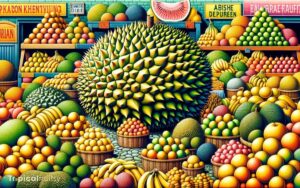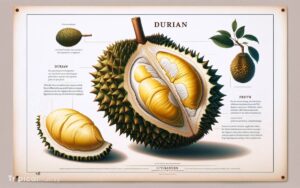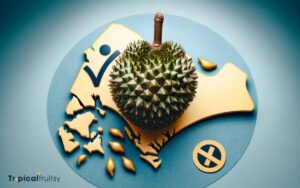Why Is Durian So Expensive? Unlocking the Mystery!
The high cost of durian, known as the ‘King of Fruits,’ is attributed to its rarity, specific harvesting season, labor-intensive cultivation, and short shelf life.
These factors, along with high demand, limited growing regions, and the cultural prestige of certain varieties, contribute to its luxury pricing.
Expensive yet coveted, the durian’s distinctive flavor and status as a luxury fruit justify its premium cost.
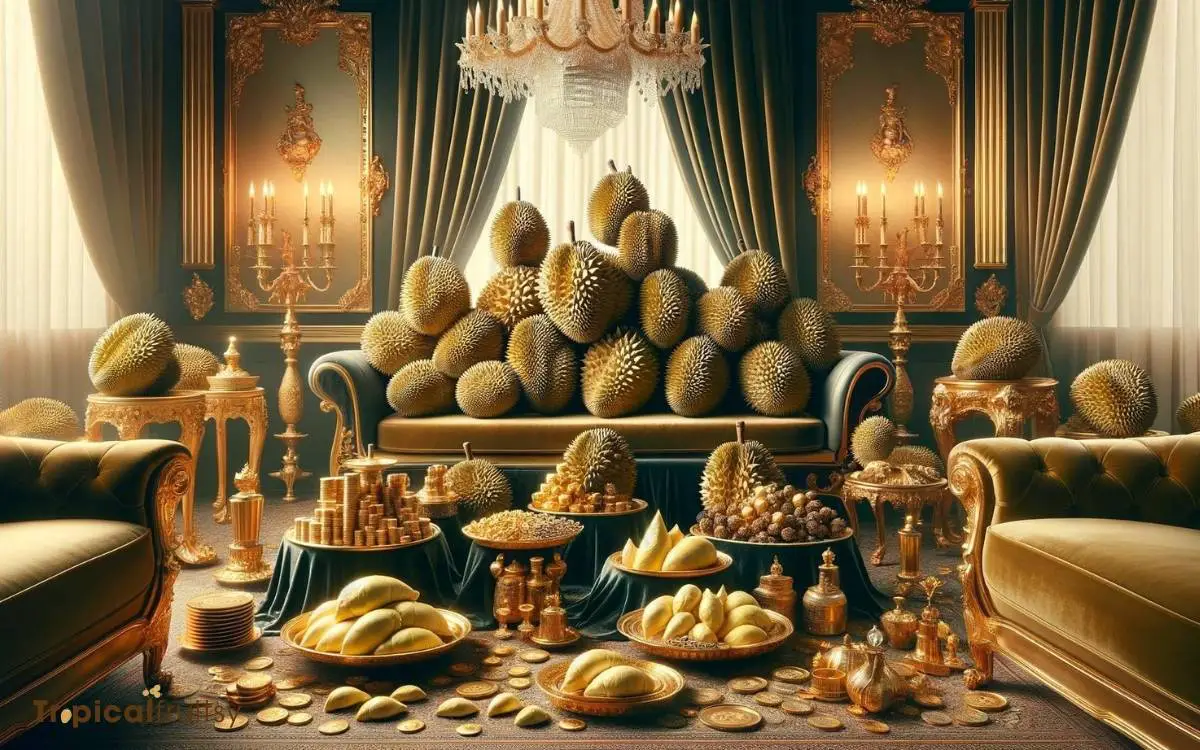
Key Takeaway
Factors Contributing to the High Cost of Durian Fruit
| Factor | Description | Impact on Price |
|---|---|---|
| Rarity | Seasonal availability and limited harvest periods | Increases exclusivity and cost |
| Cultivation | Requires specific climate and careful cultivation | Adds to production expenses |
| Labor Intensiveness | Skilled labor required for harvesting | Raises labor costs |
| Shelf Life | Durians perish quickly and need fast shipping | Elevates shipping and handling fees |
| Export/Import | International transport and tariffs | Increases retail price |
| Consumer Demand | High popularity, especially in Asia | Drives up market value |
| Growth Regions | Grown mainly in Southeast Asia | Limits supply, affecting price |
| Quality & Grade | Variance among durian types and grades | Causes price differentiation |
| Cultural Significance | Symbol of status and luxury in certain cultures | Enhances prestige and pricing |
Rarity and Seasonality
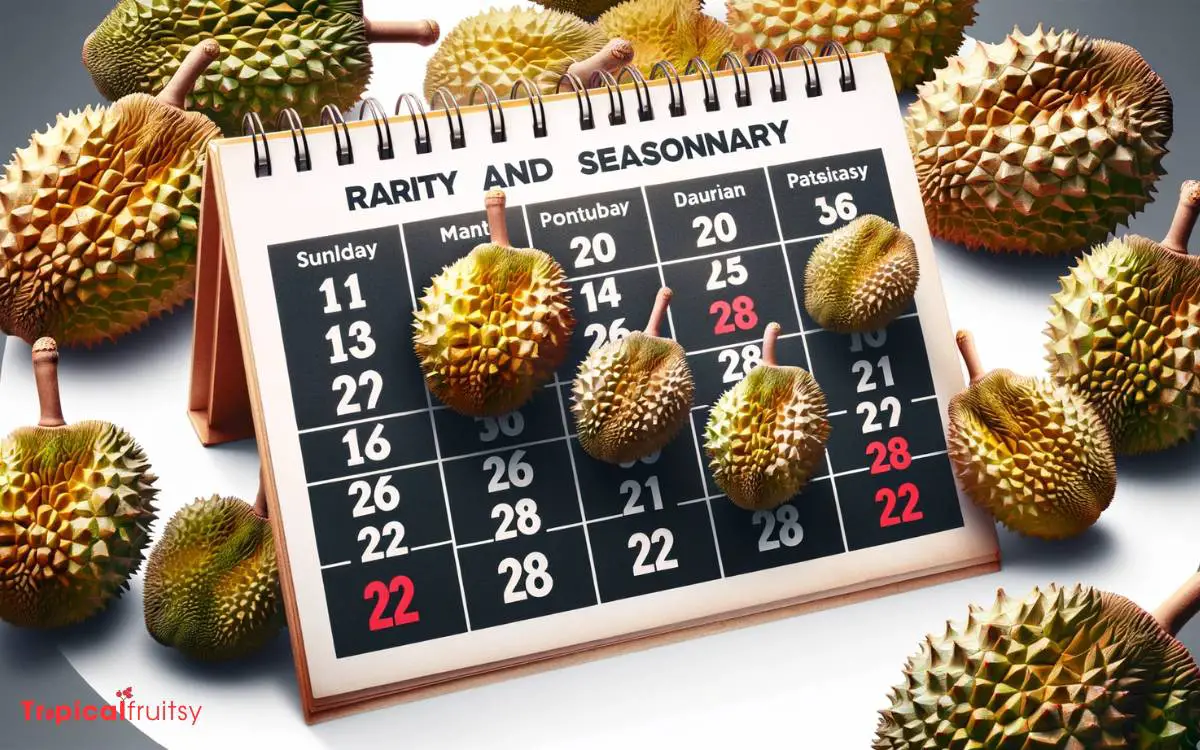
Why do factors such as rarity and seasonality contribute significantly to the high cost of durian?
The durian fruit, often revered as the ‘King of Fruits,’ is not only unique in flavor and aroma but also in its availability.
It thrives predominantly in certain regions, such as Southeast Asia, and its production is subject to the whims of climate, making its presence in markets limited to specific times of the year.
This periodic scarcity creates a sense of exclusivity and heightened demand among connoisseurs and enthusiasts, driving up market prices.
Furthermore, certain durian varieties are exceedingly rare, adding to the allure and commanding premium prices.
This value is woven into the cultural fabric of places where durian is most cherished, perpetuating its status as a luxurious delicacy.
Now, let us consider the complexities of labor-intensive harvesting, which further escalates the cost.
Labor-Intensive Harvesting
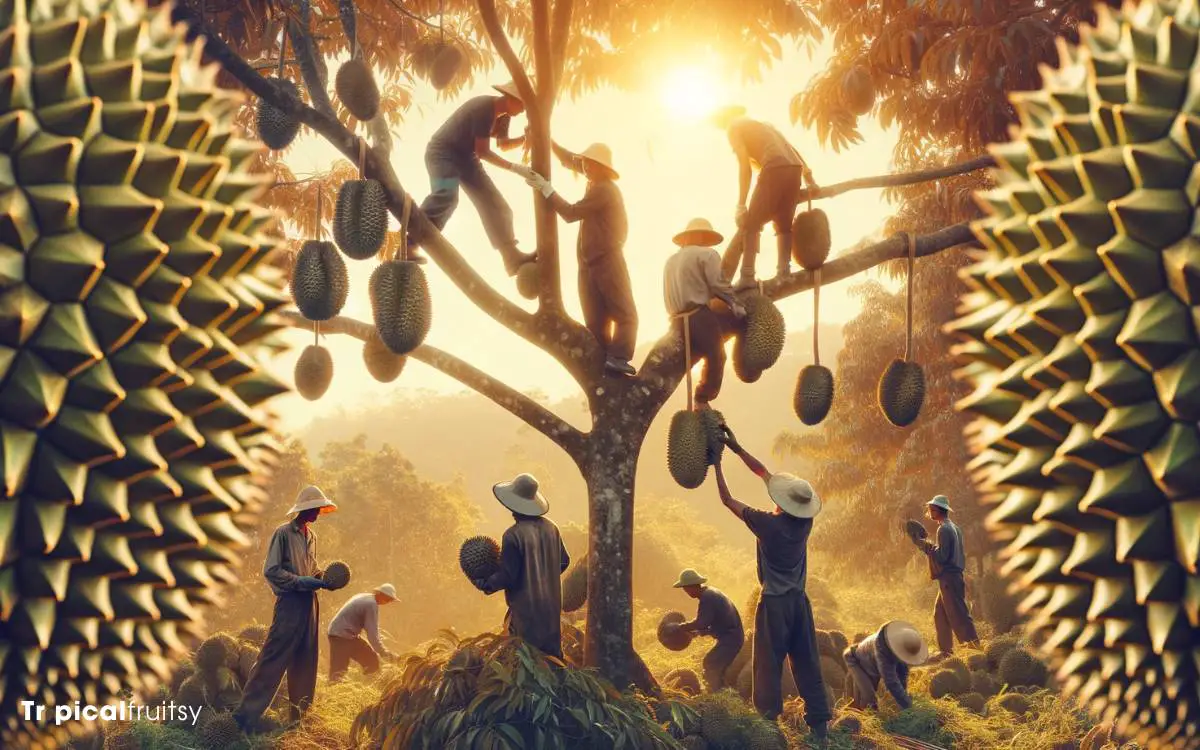
Labor-intensive harvesting invariably contributes to the high cost of durian, as the manual effort required for cultivation and collection is both meticulous and time-consuming.
Harvesters must possess a keen eye and gentle touch to ensure that each thorny fruit is plucked from the tree at the precise moment of peak ripeness.
The delicate nature of this task means that durians cannot be harvested by machine without risking damage to the fruit, necessitating a workforce skilled in the art of durian picking.
| Aspect | Description | Impact on Cost |
|---|---|---|
| Skilled Labor | Requires experienced workers for careful harvesting. | Increases cost |
| Time | Each durian requires individual attention and proper timing to pick. | Increases cost |
| Handling | Durians must be handled delicately to avoid damage. | Increases cost |
Specialized Cultivation Needs
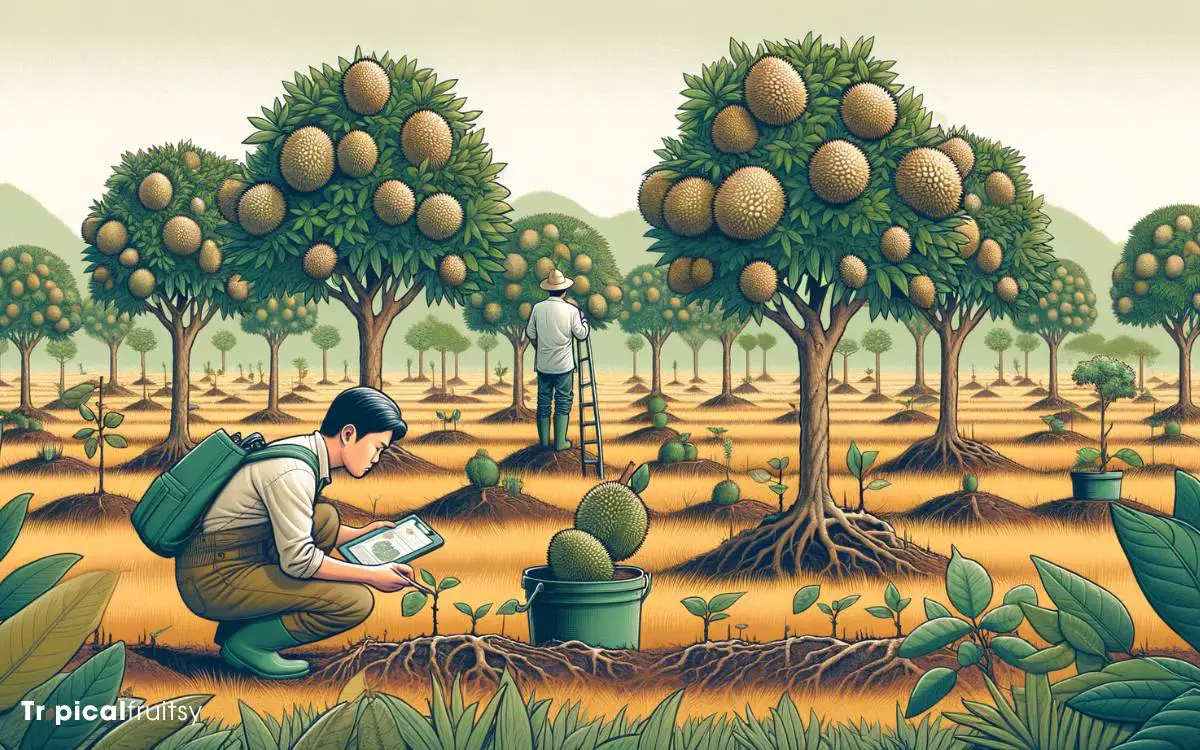
Durian trees require specific climatic conditions and soil types, which limits their cultivation to certain geographic areas and contributes to the fruit’s premium pricing.
These majestic trees flourish under a precise set of environmental parameters, demanding the utmost attention and care from growers.
The specialized needs of durian cultivation are a testament to the dedication required to produce this unique and luxurious fruit.
- Tropical Climate: Thrives in warm, humid conditions with well-distributed rainfall.
- Rich Soil: Prefers deep, fertile, well-drained soils with high organic matter.
- Elevation: Grows optimally at elevations up to 800 meters.
- Spacing: Requires ample space to grow, affecting land use efficiency.
- Maintenance: Needs regular pruning, pest control, and fertilization.
The meticulous cultivation of durians encapsulates the passion and expertise invested in bringing this king of fruits to market.
Short Shelf Life
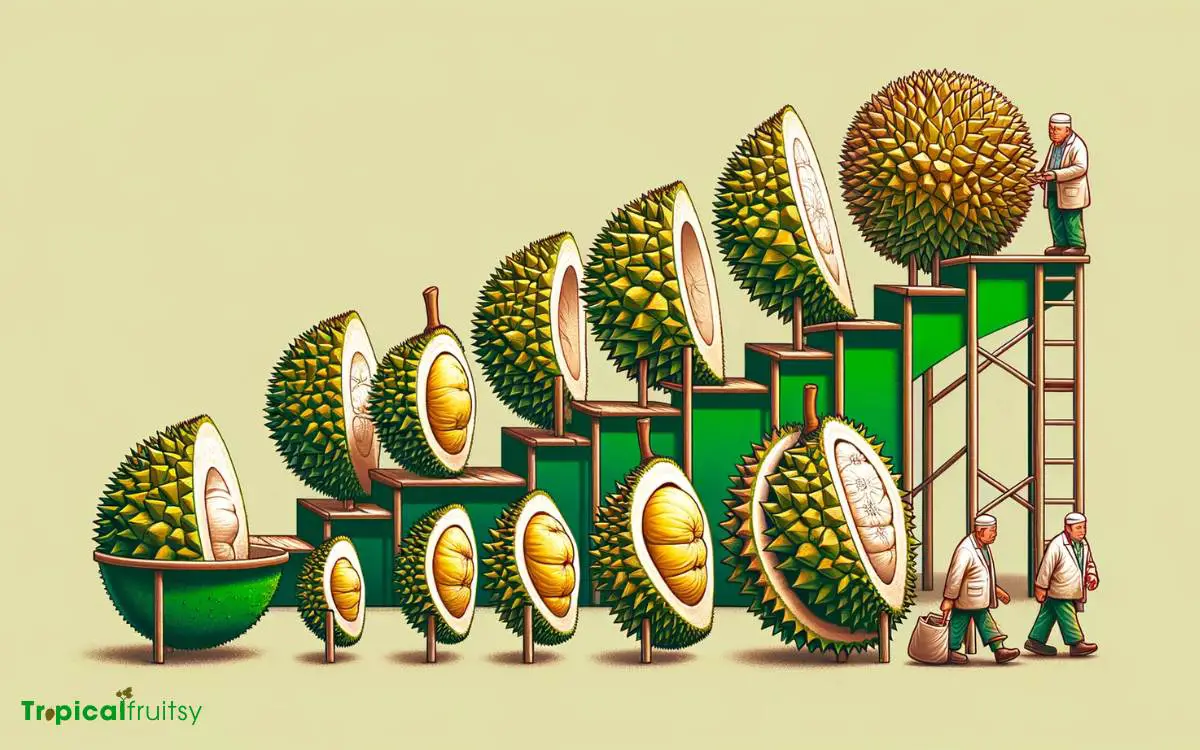
A significant factor in the high cost of durian is its rapid spoilage rate, which demands immediate consumption or processing post-harvest.
The fruit’s delicate balance between ripeness and decay presents substantial preservation challenges, constraining the duration it remains marketable.
Consequently, these factors necessitate a logistical urgency that amplifies the fruit’s already premium price point.
Rapid Spoilage Rate
The perishability of durian significantly contributes to the fruit’s high cost. Once harvested, the clock starts ticking, and the race to deliver this delicacy to consumers begins.
Here’s why:
- Sensitive to Environmental Changes: Durian’s quality deteriorates quickly when exposed to fluctuating temperatures.
- High Respiration Rate: Durians respire more rapidly than many other fruits, leading to a faster spoilage process.
- Delicate Flesh: The soft, custardy flesh of the durian is prone to bruising and microbial invasion.
- Optimal Ripeness Window: There’s a narrow timeframe in which durians are at their peak flavor and texture.
- Transportation Vulnerability: The journey from tree to table must be swift to prevent spoilage.
Understanding these factors sets the stage for discussing the preservation challenges that further inflate durian’s market price.
Preservation Challenges
How do preservation challenges due to durian’s short shelf life contribute to its high cost?
The enigmatic durian fruit, coveted for its unique flavor, is notorious for its fleeting freshness. Its brief post-harvest window demands rapid consumption or processing, which presents daunting logistical hurdles.
To maintain its desirable qualities, meticulous care in handling and expedited distribution are imperative.
This urgency fuels the need for specialized storage and transport facilities that can accommodate the durian’s temperature sensitivity and ethereal ripeness.
The investment in such infrastructure and the increased risk of spoilage en route contribute significantly to the fruit’s premium pricing.
Each succulent bite represents a triumph over the natural decay, embodying the intricate balance between the fruit’s ephemeral perfection and the relentless march of time.
Export and Import Costs
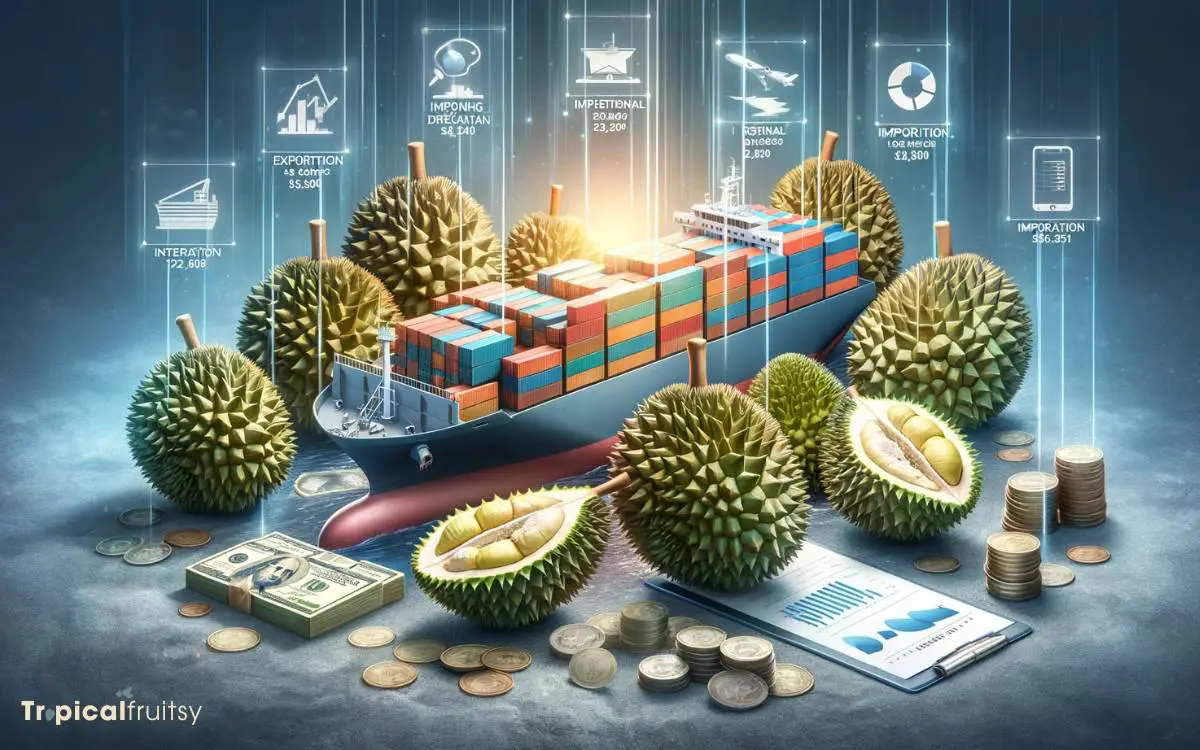
Export and import costs significantly contribute to the high price of durian, as the delicacy often incurs considerable expenses during international shipping.
These luscious fruits, cradled in their spiky armor, traverse oceans and continents to satisfy the cravings of enthusiasts around the globe.
The journey they embark upon is not just a voyage but a meticulous orchestration of care, precision, and regulation, which unfolds as follows:
- Specialized Packaging: To protect the fruit’s integrity and contain its potent aroma.
- Temperature-Controlled Shipping: Ensures the durian’s freshness upon arrival, despite long transit times.
- Customs Duties: Import tariffs and taxes levied by destination countries.
- Quarantine Inspections: Compliance with agricultural standards to prevent the spread of pests.
- Logistical Coordination: Careful planning to minimize transit time and maintain quality.
Each of these elements underscores the passionate endeavor to deliver the King of Fruits from its tropical homes to discerning palates worldwide.
High Consumer Demand
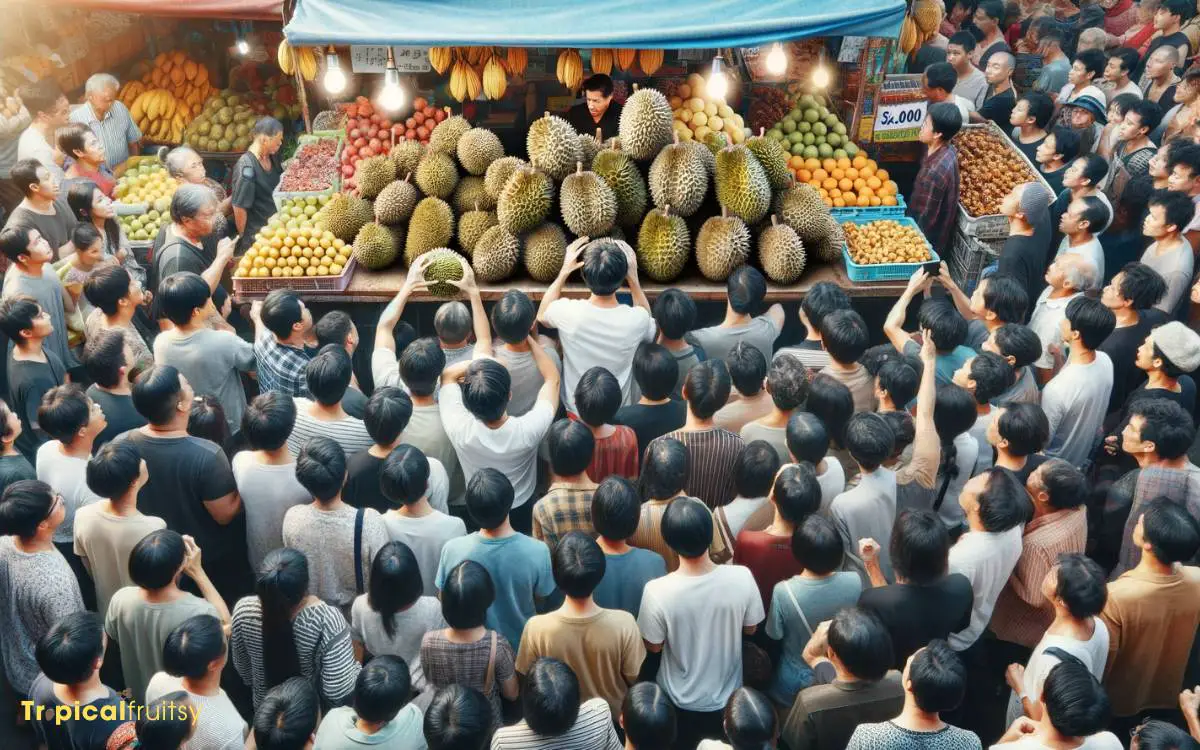
Consumer demand for durian has surged globally, driving up prices as aficionados and curious epicureans alike vie to experience its unique taste and creamy texture.
Often referred to as the ‘King of Fruits,’ durian’s rich, custard-like flesh, which hides beneath its formidable spiky exterior, has become a culinary treasure in both its native Southeast Asia and beyond.
The growing middle class in China, in particular, has shown an insatiable appetite for this exotic delicacy, leading to an unprecedented spike in demand.
Enthusiasts are willing to pay premium prices for the promise of savoring the complex flavor profile of the finest durian varieties.
As demand continues to escalate, the strain on supply becomes increasingly evident, especially considering the limitations imposed by the fruit’s limited growing regions.
Limited Growing Regions
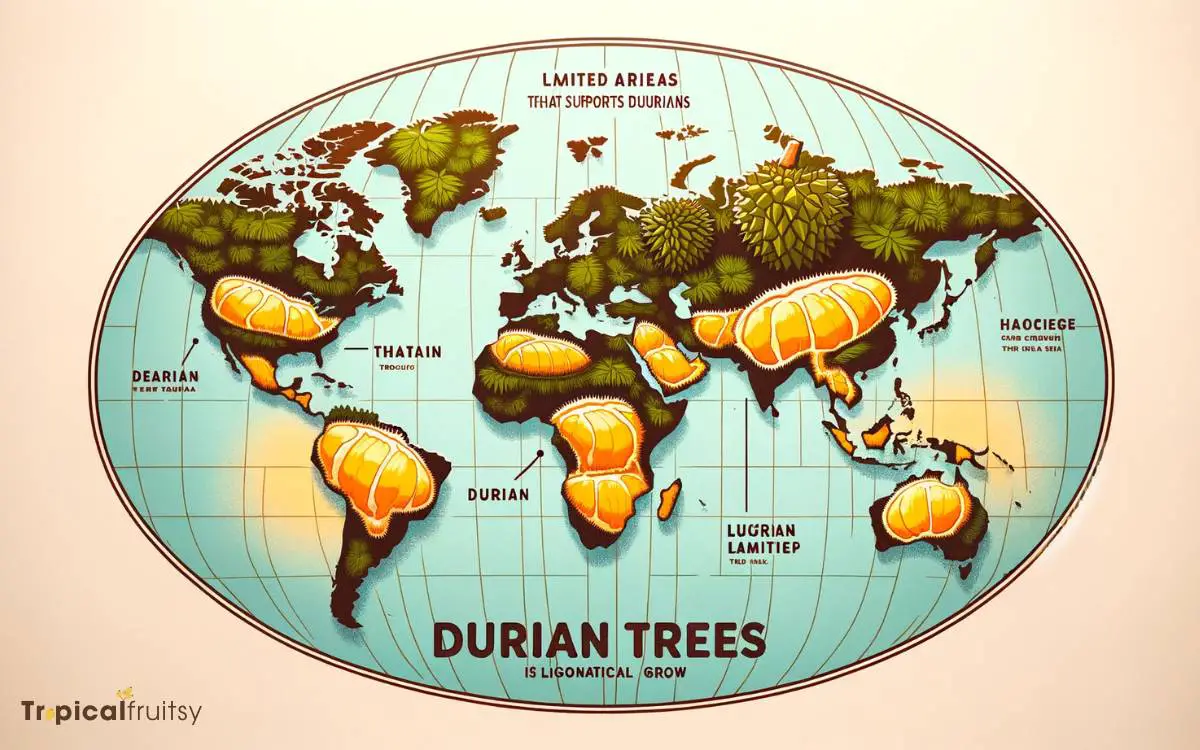
Durian cultivation is confined to tropical climates, further contributing to its scarcity and high cost. These regions provide the ideal conditions necessary for durian trees to bear the unique fruit renowned for its distinct taste and aroma.
Only a select number of countries have the privilege of fostering these thorny treasures:
- Thailand
- Malaysia
- Indonesia
- The Philippines
- Vietnam
Each location offers a unique terroir, affecting the fruit’s flavor profile, size, and texture, which durian aficionados cherish and seek.
The limitation to such specific geographical areas means that durian cannot be mass-produced globally, maintaining its status as an exotic and luxurious commodity.
This exclusivity inevitably leads us to the next intriguing aspect of durian’s value: the quality and grade variance.
Quality and Grade Variance
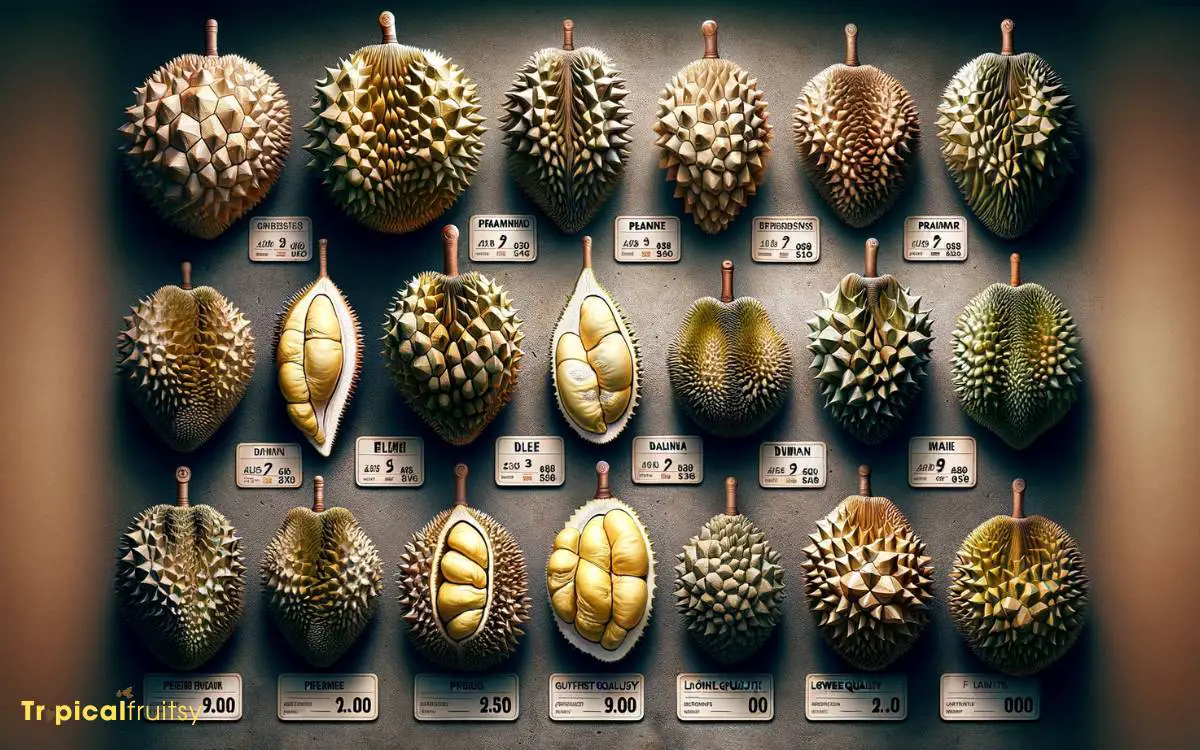
The quality and grade variance of durian fruit significantly influence its market price, reflecting factors such as maturity, appearance, and taste. Connoisseurs and casual consumers alike recognize that not all durians are created equal.
Grades are meticulously assigned, taking into account the flesh’s color and texture, the size and shape of the fruit, and, most crucially, the complexity and depth of flavor profile.
These distinctions hold immense importance as they ultimately dictate the sensory experience and satisfaction derived from each fruit.
| Grade | Characteristics | Price Range |
|---|---|---|
| A | Perfect shape, rich flavor, firm texture | Highest |
| B | Minor blemishes, good flavor, softer texture | Medium |
| C | Irregular shape, milder flavor, various textures | Lower |
Understanding these nuances impassions aficionados, who are willing to pay a premium for top-tier durians. This fervor segues into the fruit’s cultural significance and prestige, further elevating its status and value.
Cultural Significance and Prestige
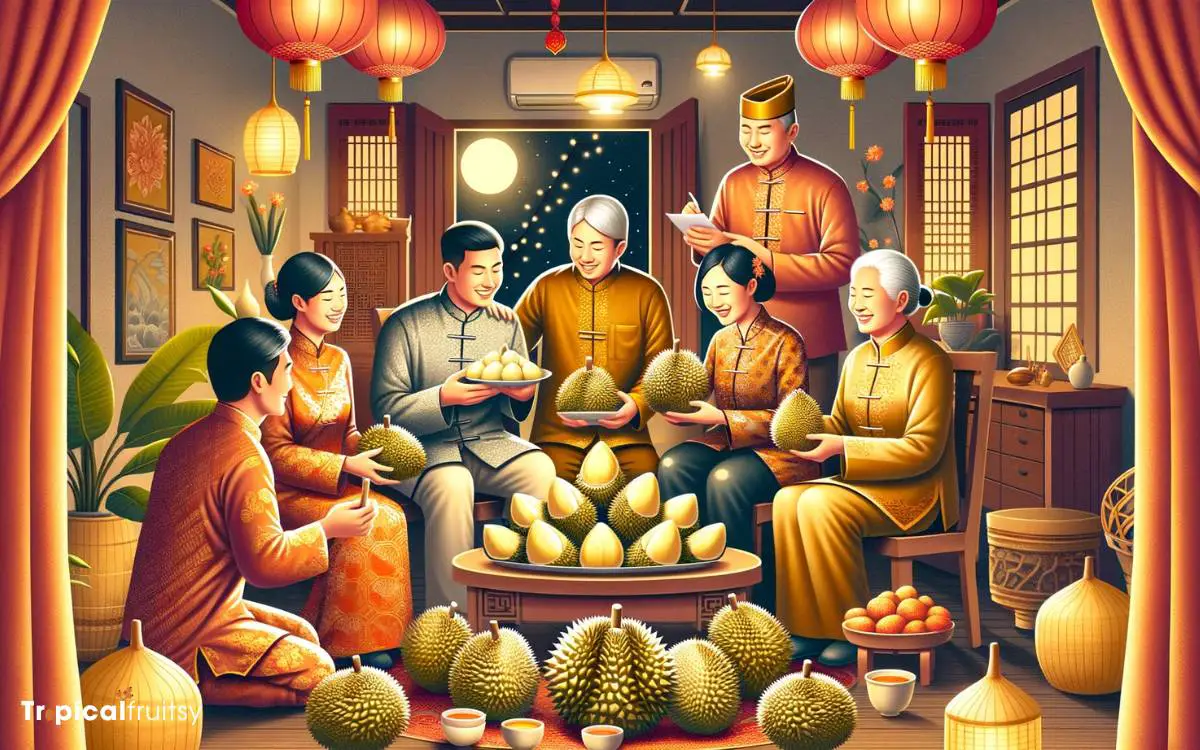
Durian’s esteemed position in Southeast Asian culture extends beyond its distinctive aroma and taste, embodying a symbol of affluence and social status.
As a revered traditional delicacy, it plays a pivotal role in festive celebrations and is often presented as a prestigious gift, reflecting respect and honor.
This cultural reverence contributes significantly to the fruit’s premium pricing, underscoring its luxury status in the eyes of both locals and international connoisseurs.
Status Symbol Fruit
Over the years, durian has transcended its role as merely a tropical fruit, becoming a symbol of affluence and social status in various Southeast Asian cultures.
The fruit’s prestige is reflected in:
- Luxurious presentations: Served at opulent banquets and premium fruit buffets.
- Gift-giving practices: Considered a high-end gift during festivals and business meetings.
- Premium varieties: Sought-after breeds like Musang King command top dollar.
- Agricultural investment: Cultivation involves significant time and resources, elevating its status.
- Media portrayal: Featured in luxury-focused content, reinforcing its association with wealth.
This veneration of durian speaks to a cultural reverence that extends beyond mere consumption.
The fruit’s stature is deeply interwoven with traditions and societal perceptions, paving the way for its recognition as a traditional delicacy of considerable value.
Traditional Delicacy Value
While durian’s status as a luxury symbol has significantly boosted its price, its deep-rooted cultural significance and prestige further solidify its position as a traditional delicacy with exceptional value.
Esteemed in many Southeast Asian cultures, the durian is not merely a fruit but an embodiment of tradition, often hailed as the ‘King of Fruits.’
Its unique flavor and creamy texture are celebrated in festive feasts and family gatherings, symbolizing wealth, hospitality, and social status.
The reverence for durian is passed down through generations, with its consumption steeped in ritualistic practices that accentuate its cultural worth.
As a result, the fruit commands a price that mirrors its esteemed stature, a nod to its longstanding cultural heritage and the luxurious experience it provides to aficionados.
Conclusion
In the tapestry of global agriculture, the durian stands as an opulent fruit, its costliness woven from threads of rarity, laborious cultivation, and fleeting freshness. The convergence of export intricacies and insatiable demand further inflates its value.
As it anchors tradition and exudes luxury, the durian’s price is not merely a reflection of supply and demand but a testament to its cultural tapestry, where each spiky orb embodies the intricate dance of nature’s bounty and human desire.

